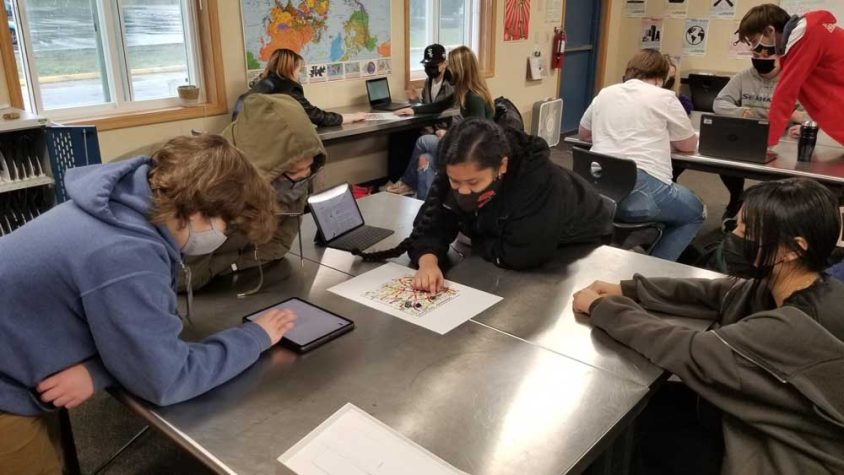by Mara Mersai, Maritime High School Student Blogger
Hello! Mara Mersai here. Over the school year, MHS students have been interviewing people about their role from different parts of the maritime industry—learning about them, learning about the importance of their job, and how it relates to maritime and our MHS core competencies. With each interview, we notice commonalities. These similarities that were talked about from each interview were traditions, both old and new. There are a lot of the old and new traditions that we’ve learned, and we’d like to share them with you!
Starting off with the old traditions that are still used within the maritime industry: one of them is the education or experiences that is needed before working in their own job. Every interviewee that we’ve talked with had to go through classes or training in order to gain experience and skills so that they can do their job well. Many of our interviewees began their career paths in the US Navy or followed their family’s footsteps into maritime careers. We learned how these time-honored paths have led people into maritime professions. Still, we at MHS would like to see, and maybe even help create, other pathways to careers and make a difference in the maritime field.
And coming in with some new traditions, there is a lot to unpack! Back then, mostly men were working within the maritime industry. But now, more and more women are joining and working, and the maritime industry is being more open towards people within different races as well. For example, there is Veasana Hoy, a director for the Youth Maritime Collaborative, who wants to work to help the younger people to be a little more interested in the maritime industry. And then there is Savannah Smith and Ebony Welborn, who both want to bring up awareness in Black, Indigenous, and People of Color. Unfortunately, there is a long line of shipyards being closed down.
Recently, people had commented a lot about their thoughts on the Foss shipyard closure; most of them were talking about the underfunded pensions. Only two or three commenters put blame on the coworkers, saying as if those people were just asking too much. Some blame the government, or one said about the pressures of that being replaced as a waterfront. There are also some that say that the values for land are increasing because the populations of people living in Seattle are increasing, although it can be argued by the fact that more people meant more customers/producers. Some discussed what will happen to the area that holds the shipyard, including the waterfront; some say that maybe another park will take place, though, one commenter argued that it will just be overrun with homeless people, knowing that Seattle’s area has a large population of poverty. But one suggested there could be a museum, and they could collaborate with MOHAI (Museum of History & Industry).
With our area’s deep maritime history, there is a lot to learn about long-standing traditions. At the same time, we’re excited to see innovators enter the field with new ideas to shake up established practices and norms—one day it just might be one of us from Maritime High School ?.

